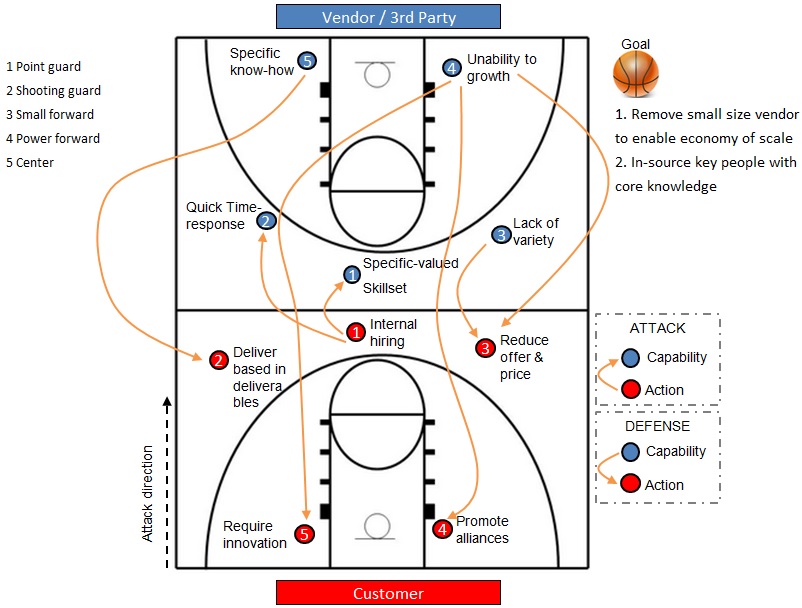Home »
Misc »
How to be a good steal in basketball
How to be a good steal in basketball
Basketball Steal
Home>Sports>Basketball>Basketball Statistics
PreviousNext
A steal in basketball is a turnover that happens when a defensive player takes or intercepts the ball from the offensive player or dribbler. Steals can happen when a defensive player uses his hands to swipe the ball out of the dribbler's hands. Another way to steal the ball is by picking or intercepting a pass from another offensive player. Steals or any turnovers are looked at as a huge advantage if your team can come up with them, this is because it puts the ball in your offense’s hands more often.
You must be careful not to make contact with the ball-handler's hands, body, or forearms. This is called a personal or reach-in foul and will result in free throws for the other team.
Table of Contents
- How To Steal In Basketball
- Cons of Steals In Basketball
- Pros of Steals In Basketball
- Basketball Press Defense
- Basketball Steal Percentage
How To Steal In Basketball
If you're looking to incorporate more steals in your game, follow these steps.![]()
- Know the offense and what players are weak dribblers.
- Play press defense and force the offense to make mistakes by setting traps.
- Get low and bend your knees on the court to stay with the dribbler.
- Trust your instincts and anticipate where the dribbler is going.
- Focus on your speed and practice quick agility exercises in the offseason.
- Be aggressive but not too aggressive as you don’t want to take fouls
Cons of Steals In Basketball
There are a few cons and risks of attempting to steal in a basketball game.
- steals can leave the court open for breakaways if unsuccessful
- steals can result in personal fouls or “reach-in” fouls
- attempting too many steals can make a player foul out of the game
- Attempting too many steals can force the offense to adjust and change their gameplan
Pros of Steals In Basketball
There are lots of pros to attempting a steal in a basketball game.
- steals result in turnovers if successful
- steals can intimidate the offense and change momentum of the game
- Keeps the ball out of the hands of the opposing team
- Steals put the ball in the hands of your offense
Basketball Press Defense
A press defense is a type of defensive formation and strategy that applies pressure on the offense to force turnovers. On a press defense, the defense will set traps on the court to make it easier to steal the ball. They also play tighter defense than usual and on larger parts of the court than usual.
Basketball Steal Percentage
Steals are important to the outcome of a basketball game, so it's recorded for each player as a statistic. Steal percentage defines how many offensive possessions result in a steal. Steals are always recorded for the player that initiates the steal play. Players with high steal percentages can be a nice piece to have on defense.
PreviousNext
Pages Related to Basketball Steal
- Basketball Turnover
- Basketball Rebounds
- Basketball Scorebook
- Does Height Matter In Basketball?
- Defensive Rebound In Basketball
- Basketball Possession
PreviousNext
How to Steal the Ball in Basketball
Stealing the ball in basketball is a deceptively simple move.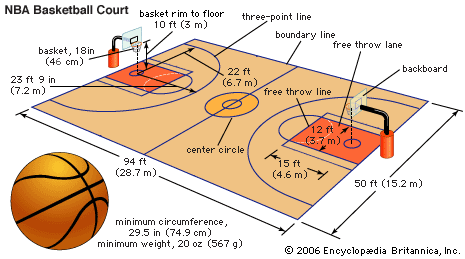 The actual process is straightforward -- swipe the ball away from someone when they’re dribbling, grab the ball as it’s in the air during a pass, or swat the ball away from the other player so that another of your teammates can grab it. But knowing when to try to for the steal and when to avoid the risk of a foul is difficult. Target players who are sloppy with the ball or who are showing you what they’re about to do.
The actual process is straightforward -- swipe the ball away from someone when they’re dribbling, grab the ball as it’s in the air during a pass, or swat the ball away from the other player so that another of your teammates can grab it. But knowing when to try to for the steal and when to avoid the risk of a foul is difficult. Target players who are sloppy with the ball or who are showing you what they’re about to do.
Look for players who are sloppy dribblers, or who expose the ball when they pick it up. Someone who doesn’t seem to have a very tight grip on the ball as he prepares to pass -- especially if he’s holding the ball away from his body -- could be a suitable target if you’re fast enough. Loose dribblers who don’t keep that ball under control might be unwittingly offering you extra time to snatch the basketball away mid-dribble.
Watch players to see how their bodies move before they make certain plays. Some players telegraph what they're about to do. For example, if someone is about to turn to the right and throw the ball to a teammate, she might keep her arms still but turn her shoulders a bit. She’s attempting to fake you out by leaving her arms still, but her body is giving out clues that she’s going to turn. Looking at the player’s torso and shoulders can help you spot such moves.
She’s attempting to fake you out by leaving her arms still, but her body is giving out clues that she’s going to turn. Looking at the player’s torso and shoulders can help you spot such moves.
Act a bit lazy yourself as you zero in on a ball you want to steal. In a January 2014 article on top defenders in college basketball, players told "Sports Illustrated" that they try to seem like they’re “off-guard” or “resting,” when in fact they’re watching the ball and waiting for a moment to strike. These tactics can make the player with the ball assume you’re not much of a threat, and he might be less likely to protect the ball carefully.
Keep an eye on where nearby offensive players are standing. You might have an opportunity to intercept a pass. If the player holding the ball decides you aren't looking and throws the ball to another player nearby, you'll be in a better position to dart in front of the intended target. Instead of trying to snatch the ball out of the air from the side, be ready to place yourself in the path of the ball so you're the one who gets it.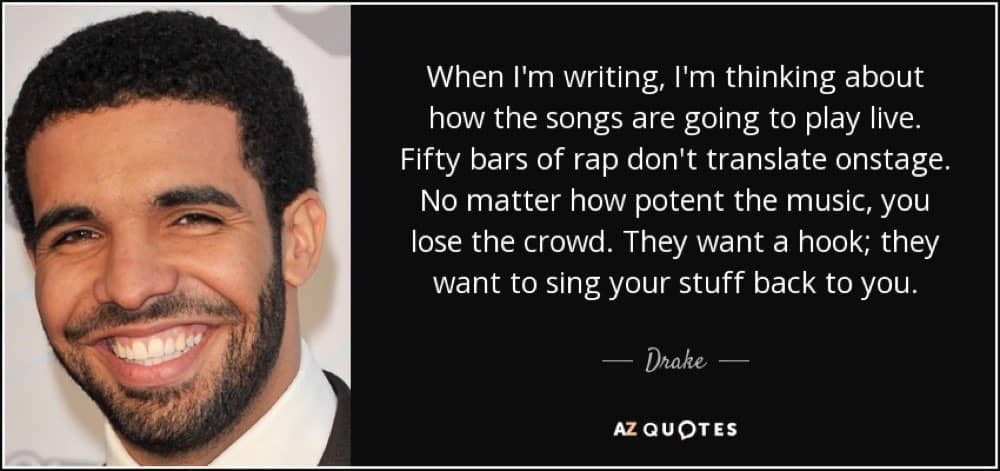
Tips
Practice defense with a friend to increase your ability to tell when to try nabbing the ball. One of you can practice dribbling -- and making it harder for someone to steal the ball -- while the other tries to take it away. If you can get a group of three people together, the third person can practice defending the dribbler, and you can try getting past the defense.
Also try to practice speeding up your reflexes. For example, "Sports Illustrated" noted that UCLA’s basketball team practices covering a flashing sensor on a wall to work on speed. In the same article, Virginia Commonwealth University’s Briante Weber said he would also try to drop and catch pens or swat bugs as additional practice.
Warnings
Don’t touch the player who has the ball when you try to steal it, or you'll likely be called for a foul.
Fight for the ball | Techniques
The struggle for possession of the ball is one of the main tasks of the player in defense.
A full-fledged player in defense is guided by the principle "the best defense is an attack."
Unfortunately, we still have quite a few players and entire teams who are limited only to guarding the basket and do not take any active measures to take possession of the ball, patiently waiting for the opponent's mistakes. Such defensive play deserves sharp condemnation.
One of the reasons why some players and teams are passive in defense is that most coaches pay little attention to ball handling techniques and do not care about improving them at all. As a result, many players do not master these techniques and, of course, do not use them in the game.
Among the leading players and teams there are many real masters - "ball hunters". An example is the player of the USSR national team K. Petkevicius (Leningrad), who uses all the techniques of fighting for the ball in the game.
In order for the player to perfect these techniques, it is necessary to systematically improve them in the training process.
The main techniques in the fight for possession of the ball are: interception, knocking out, pulling out and fighting for the ball after rebounding from the backboard.
Ball interception . Interception of the ball is the best means of counterattack. The interception of the ball, as a rule, takes the opponent by surprise, and thus creates extremely favorable conditions for the transition to the attack.
Interception of the ball is most often possible if the attacker passes the ball inaccurately, does not go towards the pass during cross passes, especially repeated ones, as well as in all other favorable cases of the game.
If the interception fails, the player must immediately stop and quickly turn back. To intercept the ball, the player must take an advantageous position, prepare for a quick dash and correctly determine the distance, the pace of the upcoming pass.
The player's actions must be unexpected, fast, ahead of the attacker's (Fig. 60). The surprise of a jerk depends on the ability to disguise your actions. To do this, the player must demonstrate passivity and indifference to the upcoming transfer of the ball with all his appearance.
60). The surprise of a jerk depends on the ability to disguise your actions. To do this, the player must demonstrate passivity and indifference to the upcoming transfer of the ball with all his appearance.
The constant threat of interception affects the decisiveness of the enemy's actions.
Fig. 60. Intercepting the ball
Kicking the ball . The ball is knocked out of the hands of the opponent either while dribbling or throwing into the basket. You can knock the ball out of the hands not only of a gaping opponent, but also of a player who used dribbling and holds the ball in his hands, or a player who lowered his hands with the ball before throwing it into the basket, and in a number of other cases.
In order to tap the ball, the defender allows the opponent to approach or himself suddenly approaches him and with a quick movement of his hand, reminiscent of the movement of a cat's paw, knocks the ball out of the opponent's hands.
Given that the hands holding the ball form a kind of bowl, knocking the ball from top to bottom is less effective than from bottom to top, in this regard, it is advisable to knock the ball with the movement of the hand from bottom to top. Since the distance between the palms holding the ball is extremely small, the ball is knocked out with the edge of the palm.
When dribbling the ball, it is advisable to take it out at the moment when the ball makes its way after rebounding from the floor to the hand. Another technique is used to select the ball while dribbling. The defender, having caught the pace of dribbling, puts his hand on the ball bouncing off the floor a little earlier than the opponent and thereby takes the ball away from the opponent’s hands, continuing to dribble it himself (Fig. 61). Knocking out the ball at the moment of throwing into the basket requires especially delicate calculation and high skill. Often, a skillfully knocked out ball saves the team from a sure hit. According to the execution technique, this resembles the action of a volleyball player when blocking, and the hand rests on top of the ball (Fig. 62). This technique is perhaps better called covering the ball. Covering the ball during shots to the basket is also applied if the defender overtakes the attacking player at the moment when he has already started the shot to the basket. In this case, the defender has the only means of fighting against the shot that has been started - this is to cover the ball. In order not to make a gross mistake, the defender is obliged, without reducing the speed of his movement, to determine the direction of his movement and the position of the ball in the hands of the opponent. The defender should not move towards the player, but overtake him somewhat and cover the ball at the moment when it leaves the opponent's hands. A defender who incorrectly determined the direction of his movement and the position of the ball will make a gross personal mistake: he will collide with the opponent or hit him on the hands.
According to the execution technique, this resembles the action of a volleyball player when blocking, and the hand rests on top of the ball (Fig. 62). This technique is perhaps better called covering the ball. Covering the ball during shots to the basket is also applied if the defender overtakes the attacking player at the moment when he has already started the shot to the basket. In this case, the defender has the only means of fighting against the shot that has been started - this is to cover the ball. In order not to make a gross mistake, the defender is obliged, without reducing the speed of his movement, to determine the direction of his movement and the position of the ball in the hands of the opponent. The defender should not move towards the player, but overtake him somewhat and cover the ball at the moment when it leaves the opponent's hands. A defender who incorrectly determined the direction of his movement and the position of the ball will make a gross personal mistake: he will collide with the opponent or hit him on the hands.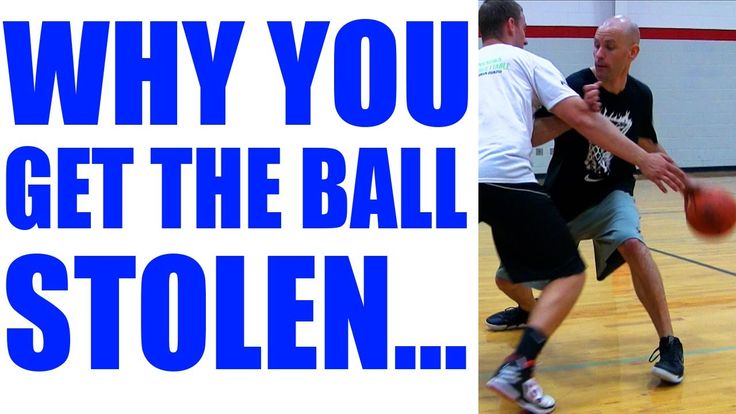
Fig. 61. Dribbling
62. Covering the ball when throwing into the basket
The defender, who has an advantage in height, fighting for the ball under the backboard, uses the following technique: he retreats to the backboard, and then, two or three steps from the backboard, passes the attacking player past him, gives him the ability to initiate a shot into the basket and then remove or cover the ball as it leaves the opponent's hands.
Pulling the ball. Pulling the ball requires fine calculation, quick, energetic action. The ball should be grabbed as deep as possible, and then jerk it sharply towards you. The jerk should be short and energetic. To increase the strength of the jerk, it is advisable to pull out with a turn of the torso.
If the ball cannot be cleared immediately, the referee awards a dropped ball. The appointment of a dropped ball is a partial victory for the defender.
A snatch is used when the opponent holds the ball in his hands, when the opponent lands after catching the ball in a jump, especially when playing from the backboard, and also when the opponent dribbles.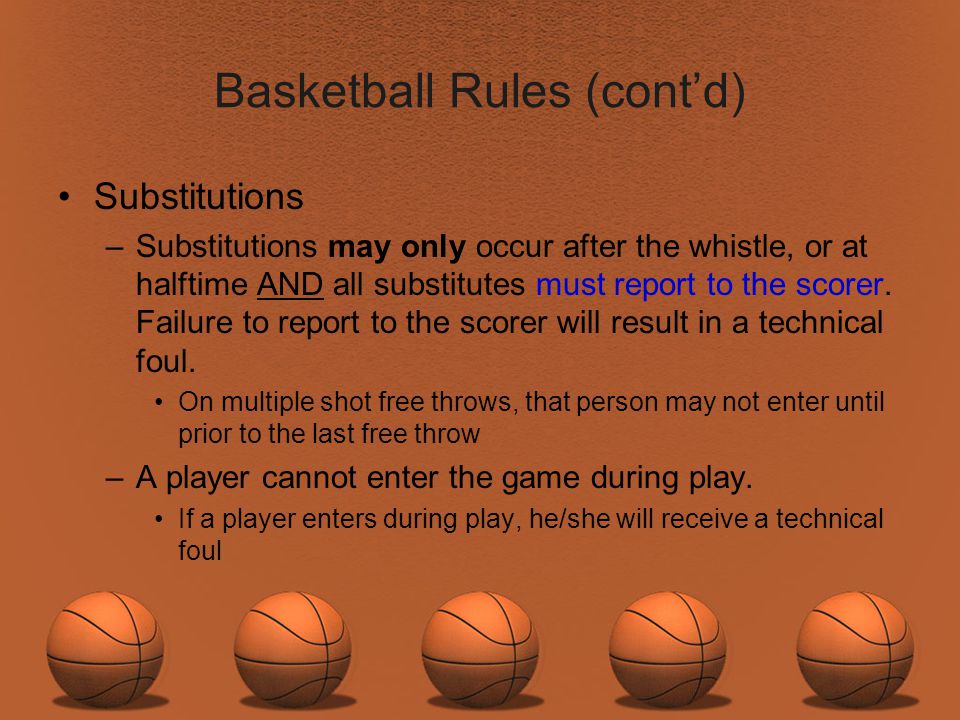
Lately, players have been successful in taking the ball away from players who are finishing dribbles. The defender carefully observes the player dribbling the ball, and, having determined the end of the dribbling, quickly captures the ball a little earlier or simultaneously with the opponent.
USSR national team player L. Alekseeva successfully uses the ball snatch after the player has caught the ball, standing with his back to the direction of movement and having lost his bearings in the position of the defender, makes a turn and tries to start a dribble or other action. An unexpected face-to-face meeting with a defender gives the defender an advantage to capture the ball (fig. 63).
Fig. 63. Pulling the ball
The fight for the ball that bounced off the backboard is typical for both defensive and offensive actions.
In order to avoid repetition, we have described this technique in the chapter "Attack".
Basketball coaching hacks: how to score goals for beginners
Even if you are a novice basketball player, we will not give you a training plan, but we will tell you why the ball flies anywhere but into the ring and into your hands. It's all about technique: even with regular training and perseverance, novice adults and children often make simple mistakes. It's a shame, let's fix it. Below are 11 life hacks on how to hone your technique to increase the likelihood of a goal for your team.
It's all about technique: even with regular training and perseverance, novice adults and children often make simple mistakes. It's a shame, let's fix it. Below are 11 life hacks on how to hone your technique to increase the likelihood of a goal for your team.
Basketball Shot Rules for Beginners
1. Hands up
In pursuit of the attacker, raise your hands, even if you are standing with your back to the pass, and even more so if the ring is in front of you. Your raised hands will increase the chance of intercepting the ball from the opponent by 2 times. Don't overlook this little thing!
2. Throw from the shield
Even Tim Duncan did not neglect them! A square is drawn on the basketball backboard. If you are standing opposite the ring, then aim at the middle of the upper part of the square, if you are standing on the side, then at the corner. If you hit this square, then the ball is at 90% of cases will fall into the ring. The law of physics and no cheating!
3.

Look at the ring, not at the ball
Practice driving the ball with your hand, not your eyes, develop tactile control. Your eyes should be on the hoop while dribbling and be aware of the position of your body in relation to the hoop. Then you will be able to take the correct posture, and the throw will be effective.
4. Dribble with the balls of your fingers only
The palm should not touch the ball, only the pads of the fingers. Dribbling should become familiar to you, like an extension of your hand. Then you can change its trajectory at any time and you will have more chances to score goals. Practice with the ball constantly.
5. Throw with one hand
If you throw the ball with two hands, you reduce the chance of hitting the basket. All the efforts of the throw are in one hand (in the right for right-handers, in the left for left-handers). The other hand only holds the ball, the leading one holds it with the fingers, not the palm.
6.
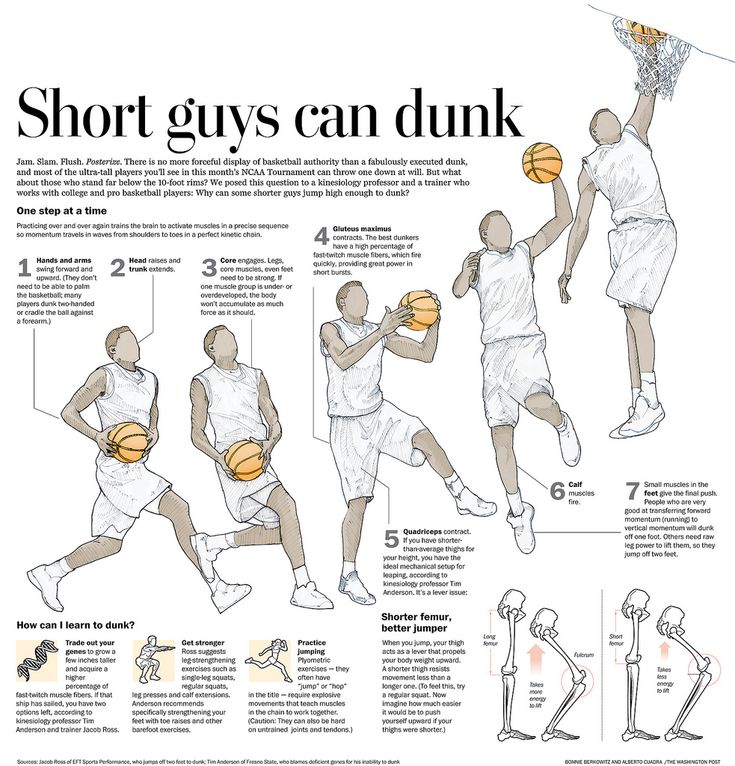
Do not jump when protecting the ring
Jumping is the main mistake of rookie defenders. To intercept the ball and block the shot, simply stick out your hands. When you are in a jump, the attacker will easily bypass you.
7. Don't look back
When you dribble, don't look back, but dribble and aim for the ring, focus on shooting (or passing to another player on your team).
8. Bring the throw to automatism
Incorporate the most basic basketball techniques into your training plan and bring the shot to automatism. Throw first from a distance of half a meter from the ring, gradually increasing it. Learn to throw the ball so that it hits the hoop without touching the edge.
Throw the ball with all fives and jump
Throwing Rules:
- Head in the center of the body - if tilted, accuracy is lost.
- Look at the ring: mentally build a trajectory. If you are far away, the ball flies in a curved curve with a maximum height of 2 meters above the hoop.

- A strong hand is in front and throws, a weak hand is on the side and directs, only holding the ball. The elbow of the throwing hand must be in line with the ring.
- The ball must rest on the fingers without touching the palm. The fingers are as far apart as possible and grab the ball.
- Throwing arm bent 90 degrees, forearm perpendicular to the floor. If you bend less, then you get not a throw, but a throwing of the ball horizontally.
The main thing in the throw is the position of the body and its balance. Place your feet apart and parallel to each other: it is important to orient them in the middle of the basket. Then the direction of the body during the jump will coincide with the direction of the throw, and the ball will fly straight into the ring. When the feet are uneven, the ball flies in the wrong direction or does not reach (although the throw was normal).
Take a deep breath and release as you exhale.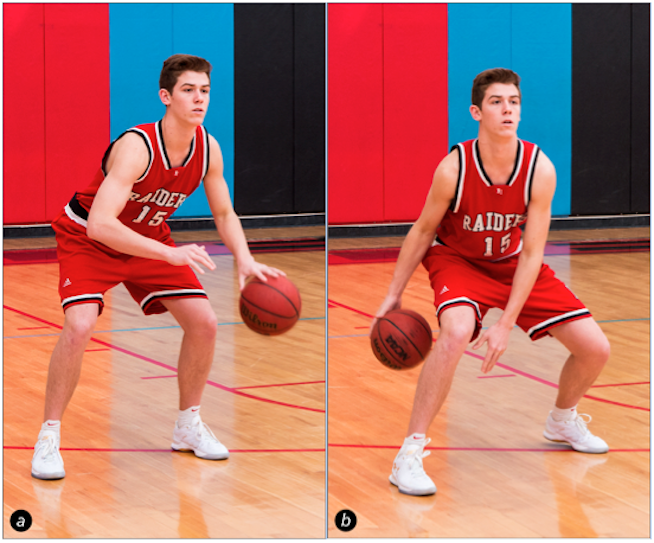
How to hold the ball and shoot in basketball
How to throw correctly: straighten your arm, point your wrist up, and with your hand set the ball to rotate in the opposite direction from the flight. The ball should seem to "roll" off your fingers.
9. Copy masters and play as a team
Watch professional basketball games and try to copy the movements of your favorite players in training. And be sure to conduct game sparring - this will allow you to develop more techniques.
10. Do not throw in a straight line
The higher the arc of the ball, the greater the chance of a goal and the less chance of blocking by the opponent.
11. Do not throw the ball from a full height stand
This is the biggest newbie mistake!
Before the throw, bend your knees slightly and at the moment of the throw, straighten your body, making a jump. You need to straighten up and push off the ground at the same time. When squatting, keep the elbow of the throwing arm close to the body and towards the ring.